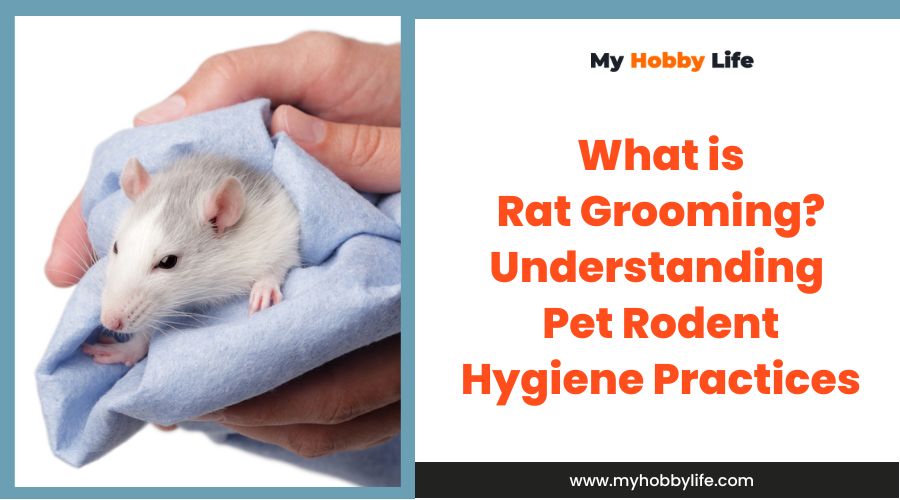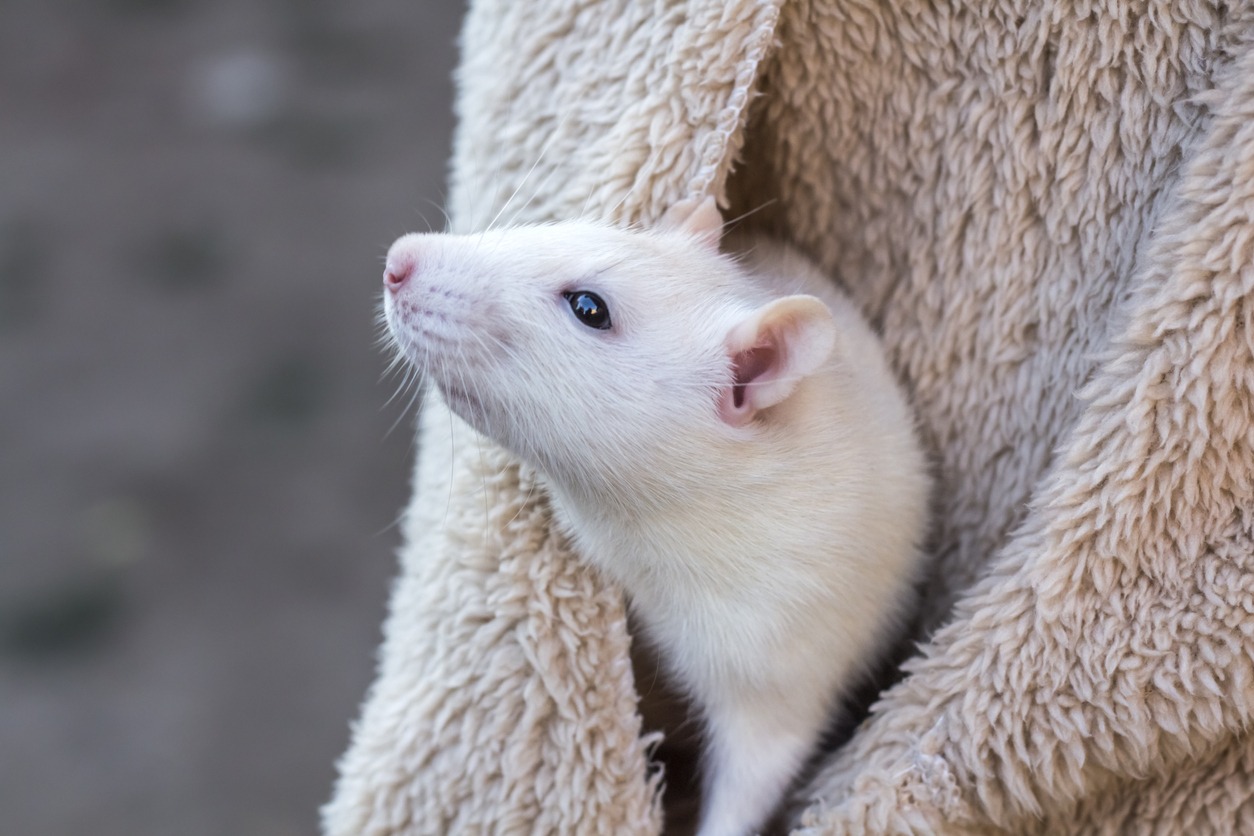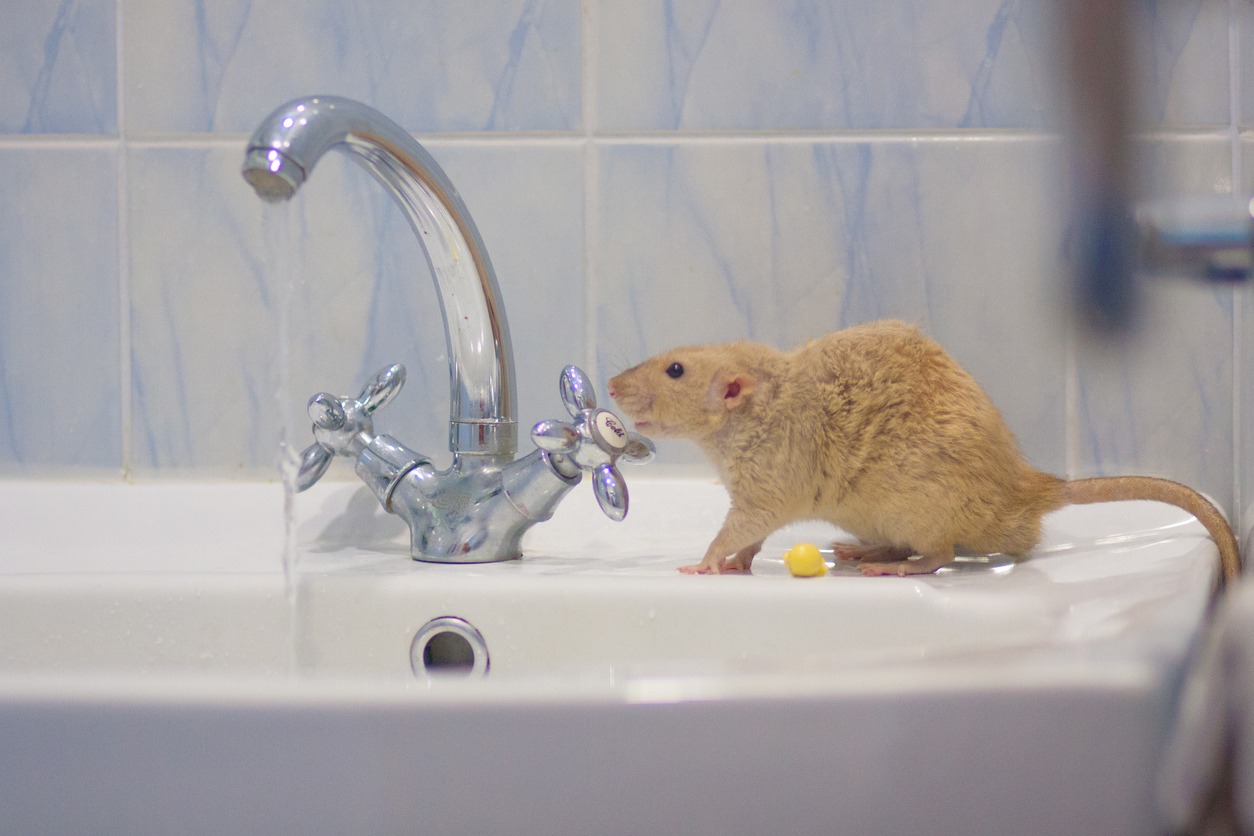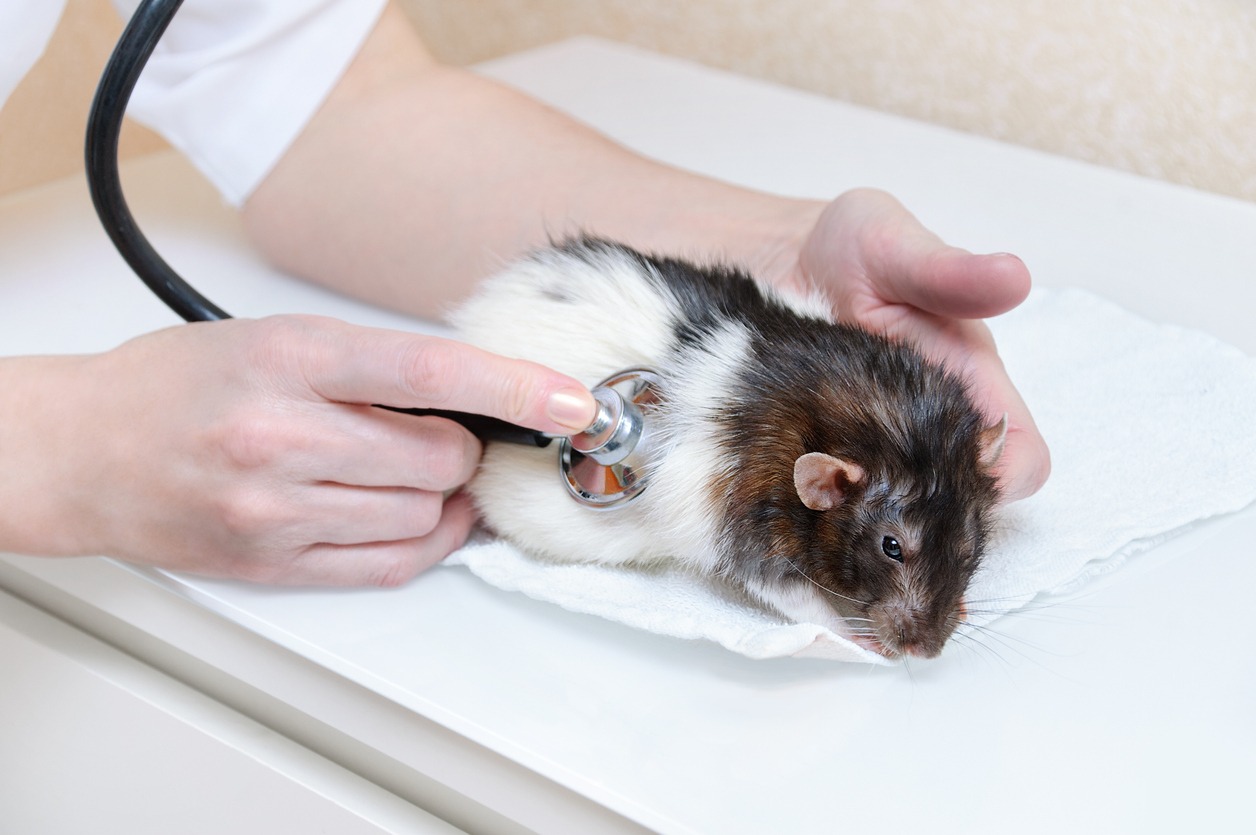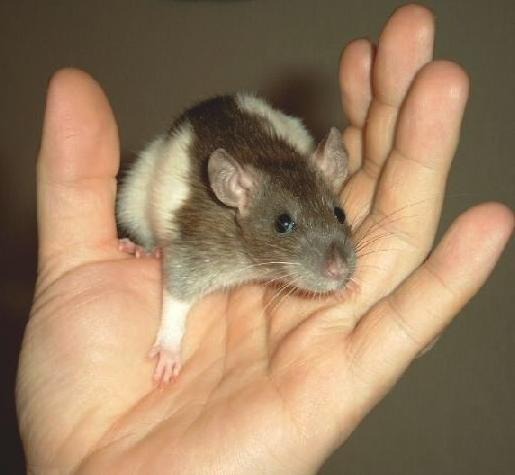Rat grooming is a fundamental aspect of a rat’s behavior and serves multiple purposes. Similar to many mammals, rats instinctively groom themselves to maintain hygiene. This self-grooming involves licking their fur and using their paws to clean their face and ears. It extends to the rest of their body, ensuring that their fur is free of dirt and parasites. Grooming is not only about cleanliness; it also facilitates thermoregulation, helping rats control their body temperature.
Beyond personal hygiene, grooming behavior in rats also has a significant social component. Rats often engage in what is known as allogrooming, where they clean each other. This social grooming strengthens the bonds between members of a rat colony and establishes social hierarchies. When a rat grooms its human caregiver, it signifies trust and affection, indicating that the rat considers the person a part of its social group.
In certain circumstances, grooming can assume a different role, such as barbering—where a dominant rat will chew off the fur of a subordinate one. This behavior can be a sign of stress or dominance within the group dynamics. Understanding these grooming behaviors can provide insights into a rat’s health and its relationships with other rats and its human handlers.
Understanding Rat Grooming
Rat grooming is an essential aspect of their daily routine, crucial for maintaining cleanliness, health, and social bonds.
Importance of Grooming in Rats
For rats, grooming is more than just keeping clean; it’s vital for their overall well-being and social interaction. Regular grooming helps rats manage parasites and maintain skin health. Furthermore, it stabilizes social structures and relationships within a rat colony, serving as an expression of affection and a means to bond with each other and their human caretakers.
Natural Grooming Behaviors
Rats exhibit a series of behaviors that constitute self-grooming. These activities include licking their fur from head to tail, using their front paws to clean their face and ears, and nibbling on their nails to keep them short. This repetitive and rhythmic motion of grooming is instinctive and indicative of a healthy rat. Grooming often extends to their cage mates, reinforcing social hierarchies and group cohesion.
- Lick fur: maintenance of clean and healthy fur.
- Clean face and ears: using paws to maintain hygiene.
- Nibble nails: preventing overgrowth and related problems.
Signs of Healthy Grooming
Observing rat grooming can provide insights into their health status. Healthy grooming entails:
- Balanced grooming: evenly spread over the rat’s body.
- Social grooming: a rat grooming another signifies a well-adjusted, social individual.
- Consistency: maintaining regular grooming behaviors without obsessive over-grooming.
A rat that suddenly stops grooming or starts over-grooming may indicate an underlying health issue or stress and should be monitored closely.
Health and Hygiene
Rat grooming is essential for maintaining good health and hygiene. Through impeccable grooming habits, rats keep themselves clean and monitor for any signs of health issues. Knowing these grooming behaviors can provide insights into a rat’s well-being.
Grooming for Cleanliness and Health
Rats dedicate a significant portion of their time to grooming to ensure they remain clean and healthy. This activity involves systematically licking and nibbling their fur to remove dirt, debris, and parasites. Grooming helps prevent skin infections and supports overall health, making it a critical aspect of a clean rat‘s lifestyle.
- Self-grooming: Vital for a clean rat, it promotes cleanliness.
- Social grooming: Reinforces social bonds and ensures hygiene among group members.
Detecting Health Issues Through Grooming Patterns
Observing a rat’s grooming patterns can alert owners to potential health issues. A deviation from regular grooming habits may indicate stress, illness, or discomfort. In contrast, over-grooming may point to skin conditions or parasites.
- Reduced grooming: Could signal ill health or psychological distress.
- Increased grooming: May reveal skin irritation or the presence of parasites.
Grooming Related Disorders
In some instances, rats may develop grooming-related disorders due to genetic disorders or environmental factors. These conditions can range from barbering (fur and whisker trimming among cage mates) to dermatitis caused by excessive grooming.
- Barbering: Stress or dominance behavior that can lead to bald patches.
- Dermatopathies: Result from over-grooming, leading to skin issues.
Rat grooming behaviors are multifaceted, serving a dual purpose of keeping the animal clean and providing a mechanism for detecting health problems. Understanding these grooming routines is fundamental for any pet owner committed to ensuring their rat leads a healthier and more comfortable life.
Grooming Practices for Pet Rats
Maintaining proper grooming for pet rats not only ensures their physical wellbeing but also fosters a positive environment for their overall health. Here are specific practices to keep your rat clean and comfortable.
Bathing Your Rat Safely
When bathing a pet rat, it is crucial to use warm water and to never fully submerge the rat, as this can cause stress. A gentle approach is to wet a cloth and carefully wipe the rat down. If shampoo is necessary, one should ensure it is a rat-safe formula, free of any harsh chemicals or strong fragrances. It’s vital to keep the bath short to reduce stress and thoroughly dry the rat with a soft towel immediately afterward.
Choosing the Right Grooming Products
For a pet rat, the grooming arsenal should include mild shampoo formulated for small pets, a soft-bristled toothbrush for gentle fur cleaning, and a warm, absorbent towel for drying. Products must be free from strong chemicals that could irritate the rat’s skin or respiratory system. An important tip is to introduce grooming products gradually to allow the rat to become accustomed to them, thereby preventing grooming sessions from becoming a stressful ordeal.
Managing Overgrown Nails and Hair
Overgrown nails can be trimmed carefully with special small pet nail scissors. It’s critical to avoid the quick, a blood vessel running through the nail, to prevent bleeding. As for hair, although rats are frequent self-groomers, using a soft toothbrush can help keep their coat in good condition and free from knots, especially in longer-haired varieties. Consistent nail and hair grooming prevents mobility issues and skin problems.
Behavioral Aspects of Grooming
Rat grooming behaviors serve various physiological and psychological purposes, ranging from social interactions to stress responses. These actions are not only crucial to their hygiene but also to their social structure and mental well-being.
Social Grooming and Bonding
Social grooming in rats is a behavior that involves one rat licking and nibbling at the fur and skin of another. This practice is significant in establishing and maintaining social bonds within a group. It is a sign of affection and can also indicate social hierarchies, with dominant individuals often receiving more grooming than subordinates. Social grooming is essential for social cohesion and can help alleviate tension within the group.
Understanding Self-barbering and Over-grooming
Self-grooming, or self-barbering, is a behavior where a rat cleans its own fur, skin, and whiskers. While this behavior is normal to a degree, excessive self-grooming, known as over-grooming, might be an indicator of underlying issues. Over-grooming can lead to hair loss and skin lesions. It is often observed in stressful situations or as a result of a compulsive disorder. Careful observation is required to differentiate between normal grooming routines and potential health concerns associated with over-grooming.
Grooming as a Response to Stress
Grooming can be a coping mechanism that rats use to manage stress. The behavior has soothing effects and is often seen following a stressful event. It acts as a form of self-regulation to mitigate stress responses, akin to self-soothing behaviors seen in other species. Researchers observe grooming patterns to assess the emotional states of rodents and to infer their coping strategies under various conditions. This can provide valuable insight into stress-related research and the development of treatments for compulsive behaviors.
Veterinary Care and Grooming
In rat grooming, one must balance daily care with the vigilance to identify when professional veterinary assistance is necessary. Proper grooming practices not only maintain the rat’s hygiene and appearance but also play a crucial role in preventing health issues that may require medical intervention.
When to Consult a Veterinarian
The owner should seek veterinary care for their rat if there are signs of over-grooming, such as bald spots or skin irritation, as this could indicate stress or health issues like parasites or infections. Unusual behaviors in grooming, lethargy, or changes in appetite are also signals that veterinary advice is needed to rule out potential underlying conditions.
Treating Grooming-Related Injuries
If a rat sustains wounds from fights with cage mates, rough handling, or accidents within the habitat, it’s essential to consult a veterinarian for proper diagnosis and treatment. Injuries left untreated can lead to infections or worse, both impacting the rat’s well-being and the bond they share with their owner. A rat’s wounds may need cleaning, medication, or even sutures, depending on the severity.
Preventive Grooming Care
Regular grooming routines can prevent issues such as teeth overgrowth and nail problems. The owner should provide materials for the rat to gnaw on, like:
- Unpainted, untreated wood
- Dog biscuits
- Cardboard tubes
These help keep the rat’s teeth at a healthy length. Similarly, the rat’s nails might require trimming if they do not naturally wear down. One should maintain a clean environment and practice spot cleaning to uphold the rat’s cleanliness and health.
Grooming Accessories and Techniques
To maintain the health and cleanliness of pet rats, it’s essential to use the correct tools and techniques. This section will guide pet owners on how to effectively groom their pet rats, showcasing various grooming accessories, innovative methods, and do-it-yourself tips.
Effective Tools for Rat Grooming
Pet rats require specific grooming tools to keep them clean and healthy. For instance:
- Brushes: A soft-bristled toothbrush can gently remove loose fur.
- Nail Clippers: Small, pet-specific nail clippers are vital for trimming a rat’s claws to prevent overgrowth and injury.
- Sponges: For a sponge bath, gentle baby-friendly sponges can be used to clean the rats without the stress of full immersion in water.
Innovative Grooming Methods
Innovative grooming methods can engage pet rats in self-cleaning behaviors while also providing enrichment:
- Chew Toys: Provide chew toys to encourage natural chewing, which helps wear down teeth and keeps them at an appropriate length.
- Interactive Play: Integrating grooming into playtime encourages rats to climb and move, which naturally aids in their grooming process.
Using these methods can effectively manage potential issues such as ringworm by maintaining a clean environment through active engagement.
DIY Grooming Tips
Owners can employ simple yet effective DIY tips for rat grooming:
- Homemade Chew Toys: Twigs from fruit trees make excellent chew toys when cleaned and baked to remove pathogens.
- Climbing Structures: Custom-built climbing frames from safe woods enable rats to exercise and groom through play.
It is always important to ensure that the materials used in DIY toys and structures are safe and non-toxic for rats.
Frequently Asked Questions
In this section, valuable insights are provided into the common inquiries pet owners might have about rat grooming practices and behaviors.
Why do rats groom themselves?
Rats are meticulous about their hygiene, dedicating a significant portion of their day to self-cleaning. They have an instinctual need to keep their fur clean and free from parasites.
What does it mean when your rat grooms you?
When a rat grooms its owner, it’s often considered a sign of trust and affection. This behavior indicates that the rat is accepting its owner as part of its social group.
Do rats need assistance with grooming?
Generally, rats are self-sufficient with their grooming habits. However, older or ill rats might require some assistance to keep clean, including spot-cleaning with a damp cloth or soft, small brush for debris removal.
How can you tell if grooming behavior in rats is normal or abnormal?
Normal grooming is consistent and methodical, contributing to the rat’s overall cleanliness. Conversely, excessive grooming or neglecting to groom may signify stress, illness, or skin irritations.
How often should you expect a rat to groom itself?
Rats typically groom themselves several times a day. It’s a normal and habitual process that ensures their coat and skin remain clean and parasitic free.
What behavioral traits indicate a happy and healthy pet rat?
A happy and healthy pet rat exhibits behaviors like active exploration, playful interactions with their environment and cage mates, as well as consistent eating and grooming habits.
